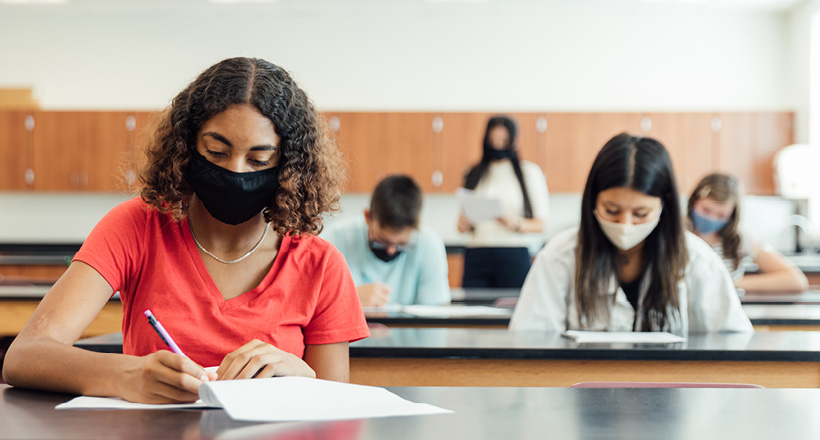Vaccine Rollout Aids in Return to Campus
The vaccine brings us closer to returning to campus, but things may complicate as statistics and public opinion develops
As COVID-19 vaccines roll out more details about the return to in-person classes in the fall unfold but many specifics are subject to change and continue to be under controversy.
“Mt. SAC is planning for a return to campus for fall 2021. This includes offering a majority of instruction and services face-to-face, physically on-campus, while maintaining online options,” said Faculty Association Lead Negotiator and Mathematics professor and Joan Sholars. “There are many factors to be considered. In consultation with public health recommendations and state guidance, the Return to Campus Taskforce is working with all constituents to develop plans for a safe return to campus.”
Sholars said that the district and Faculty Association expect to learn more details in the coming weeks. To more thoroughly prepare for a return to campus, fall schedules normally created in December will be planned in March, shortly after Spring classes begin. Sholars also said timelines will be extended in order to allow planning with the most up to date information on the vaccination progress.
With Dr. Fauci’s prediction that vaccinations would become widely available to all adults by April, it’s expected that herd immunity could be achieved by the summer.
California health officials expect no different as healthcare workers begin distributing more second doses of the Modern and Pfizer vaccines and a quicker paced distribution plan continues to develop.
This means that after California’s seniors and essential workers have been vaccinated, age-based vaccine distribution will begin, prioritizing those of older ages first in hopes to roll out the vaccine faster than prioritizing those with disabilities would.
For second year Mt. SAC student Ryan Muse, taking his vaccine before going back to school just makes sense.
“My initial thought is take the damn vaccine. But the more educated side of me knows you can’t force everybody to take their vaccine.,” Muse said. “The fact of the matter is people are still at risk. Whether you had the vaccine or not.”
This statement rings true as CSU Chancellor Joseph Castro recently announced that in order to avoid legal issues, their campuses will not be enforcing a mandatory vaccination of students or faculty.
“We’re going to do our very best to inspire participation and to keep everyone as safe as possible on the campuses,” Castro said. “We would plan to have the majority of our courses in person in the fall, if health conditions allow for that.”
Castro said that as a system the Cal States would consider variations at the local level depending on vaccine availability and the situations at different campuses.
“There are a lot of ‘if’ statements in the plan to return back to school. If we returned in fall I would be uneasy at first, especially with the fact that you can only enforce [mask and social distancing mandates] so much,” Associated Students President Hugo Fulcheri said. “You can tell people to wear their masks today, and they will still put it under their noses.”
Even if campuses were to require a mandatory vaccine, officials have noted that there is still conflicting evidence as to whether or not you are able to spread the virus even after receiving both doses of the vaccine. Even after the vaccination of at least 70% of the population, it is suspected that it will be months before herd immunity is achieved.
Vaccines are expected to be more readily available for the return to fall, however this depends on the percentage of Californians vaccinated. According to a survey done by the Pew Research Center, 60% of Americans plan to get a vaccine and, for the 40% who said they would not, half of them reported a willingness to change their mind once more research is out. The same study revealed that predominantly Black and Hispanic households were more hesitant about taking a vaccine. Black and Hispanic students at Mt. SAC currently make up around 60% of the student body.
“If we were to come across each other on the campus… you don’t know if I’ve had the vaccine and I don’t know if you care to have had the vaccine,” Muse said. “And because of that knowledge, safety protocols still need to be in place.”
Anthropology professor Frances Borella said that she is looking forward to the possibility of a return to face-to-face classes, if it is safe. “There is no comparison for quality face-to-face learning,” she said. “Mostly, I miss meeting with our Native American club… I’m optimistic as we all get vaccinations this will happen.”
Most notable about the COVID-19 vaccines is not only the speed of production but also the technology used to create it. Compared to past viruses, the two vaccines were made in a fraction of the average time; most vaccines are made over a course of 10-15 years. These vaccines also having been made with new technology could be a reason for hesitancy among those who are unsure about the vaccine.
In an interview with the Director of Research and Education at the Stanford Health Communication Initiative, Dr. Seema Yasmin notes that the reason for the speed of this vaccine was largely due to international collaboration and large monetary contributions for vaccine research. The collaboration resulting in record-breaking vaccine breakthroughs was thanks to organizations like Oxford University and their previous studies for an unknown virus outbreak in their research for “disease x.”
The new vaccines differ from old ones in speed and in function as new technology did not require mild forms or a dead virus to be injected. Instead, they use RNA technology, which uses genetic code from your own cells to make fragments of virus in order to fight it. The CDC is confident in the research done on these vaccines despite the quick development. Though the use of RNA is fairly new, it has been studied for decades. Because the vaccine does not contain a live virus, there is no risk for the disease to infect those who take it. However, more time and research are required to determine how long these vaccines will be effective and whether or not they are safe for children and those who are pregnant. Long term side-effects from vaccines are rare, but only time will tell the long term effects of the COVID-19 vaccinations.
“They can say that classes will probably be in person if everything goes to plan but there are so many contingent things that could go wrong so it is really hard to be 100%,” Fulcheri said. “Our goal, when students are back, is to make campus life more exciting than it was before.”



